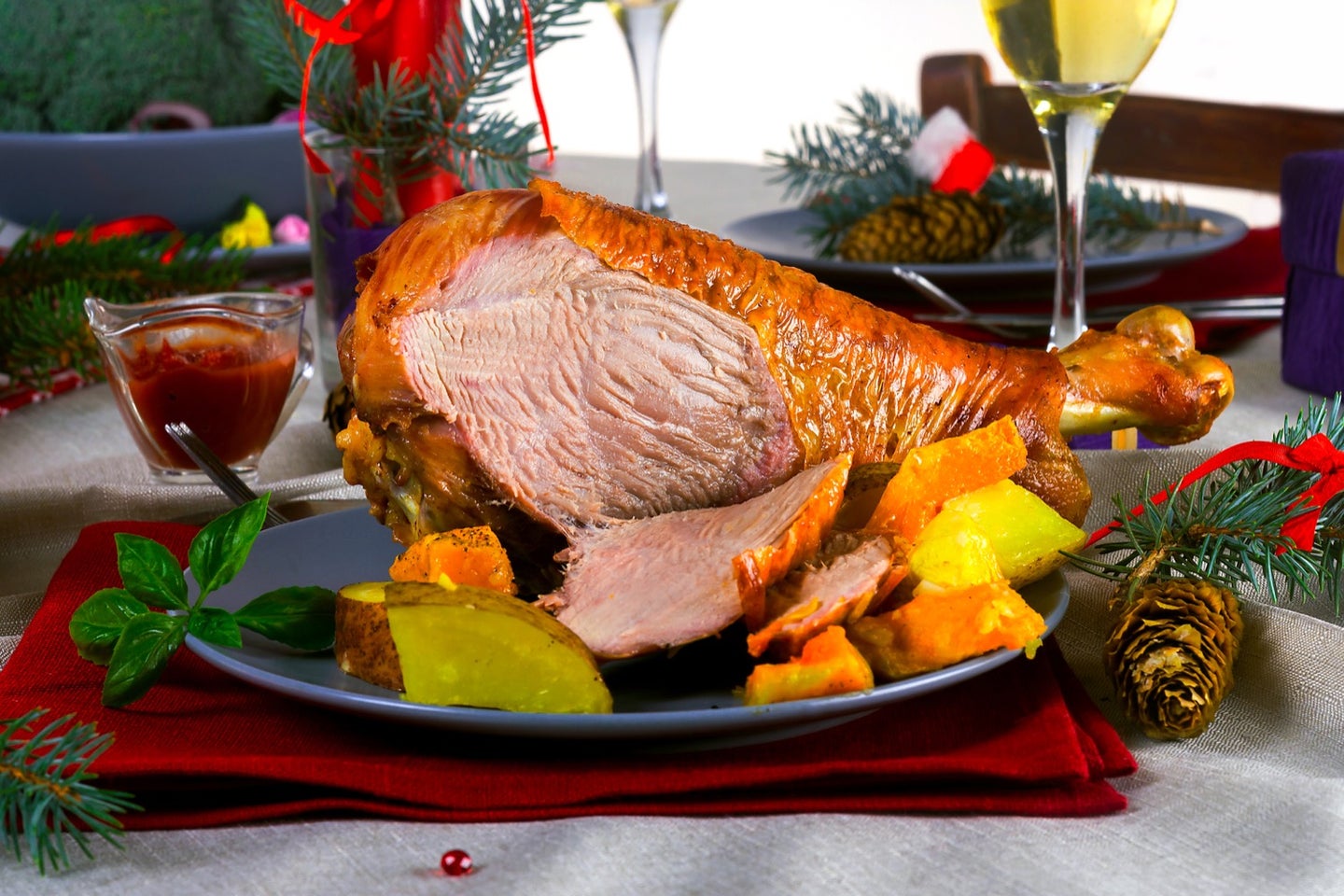Is white meat better than dark meat? There’s no wrong answer.
While settling into Thanksgiving dinner, we’re also settling this debate—right here, right now.

At most family gatherings, a Thanksgiving meal is not complete without the turkey. As the popular centerpiece is carved and served, chances are you’ll be asked: Would you like white or dark meat? And people have some strong preferences for specific slices of the giant bird. Dark meat devotees swear by the juicy tenderness of a plump thigh while white meat lovers will be quick to point out the healthiness in a lean turkey breast. From taste to nutrition, many have debated over which color meat is better.
Turns out, there is no right answer. “White or dark poultry meat, there’s not much of a difference [in terms of health],” says Dong Ahn, a poultry researcher and professor in the department of animal science at Iowa State University. “A lot of people in the US like white meat better than dark meat [in all poultry] because people are afraid of fat and try to avoid fats at all costs. But in other parts of the world, they prefer dark meat because it’s more flavorful.”
Fat vs. flavor
When people say white meat is better than dark meat, chances are they’re referring to saturated fat. “The saturated fat for the dark meat is a little bit higher than white meat,” explains Joan Salge Blake, a nutritionist and professor at Boston University. But, she adds that the difference in fat between white and dark meat can be really small. For example, a three-ounce serving (about the size of your palm) of white meat without the skin is about 125 calories and with less than two grams of fat, Blake says. In contrast, three ounces of dark meat without any skin has 147 calories and five grams of fat—just three more grams of fat from white meat.
[Related: Prep your organs to eat as much food as possible on Thanksgiving]
Dark meat may have increased fat content, but that’s often why people find it more flavorful, says Blake. As fatty acids are exposed to high oven temperatures, the heat oxidizes them into new volatile compounds that enhance meat flavor. Plus, while dark meat is a bit more caloric and fatty, it’s packed with helpful nutrients. The red meat also has a lot more vitamins and minerals—iron, vitamin B-12, vitamin A, and zinc—than lighter, leaner meat.
Why does turkey have white and dark meat?
Regardless of color, all turkey meat is equally healthy. So why does white and dark meat look so different? That boils down to the muscle activity of the gobbler. Dark meat is typically found in the thighs and legs of the bird. Turkeys spend a lot of time on their gams, standing and walking around. This causes their muscle fibers in these areas to be typically larger and require a constant energy source, Ahn says. Energy is produced using muscle fat and oxygen taken from myoglobin, which are proteins found in muscle cells that capture oxygen from your blood and supply them to working muscles. Myoglobin naturally has a red pigment, and the more active the muscles are in the thighs and legs, the more myoglobin accumulates in the area.
[Related: 5 main dishes to serve up as alternatives to turkey at Thanksgiving]
White meat, on the other hand, comes from the wings and breasts of the turkey. Ahn says white meat has a lighter shade because the structure and muscle composition in these regions are different from dark meat. Turkeys do not normally fly unless startled or in danger—even then it’s only at a short distance and not very high from the ground. Because these muscles are not used often, there is less muscle fiber and, therefore, less demand to make constant energy from muscle fat. As a result, there is less of a need for myoglobin to shuttle oxygen to these muscle groups.
If you’re one of the few who hasn’t pledged loyalty to either color of meat, Blake says you can’t really go wrong with any part of the turkey. When cooked properly, the whole turkey is a rich protein powerhouse, she says. “It’s a bird that keeps on giving and giving.”